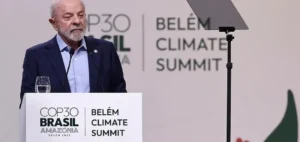Out of service because of the war in Ukraine, the Nord Stream gas pipelines linking Russia to Germany under the Baltic Sea have both been hit by spectacular leaks preceded by underwater explosions, with the European Union promising the “strongest possible response” to this “sabotage”.
The three large leaks identified since Monday off the Danish island of Bornholm, between southern Sweden and Poland, are visible at the surface with boils ranging from 200 meters to one kilometer in diameter, announced Tuesday the Danish military, images to support.
The Nord Stream 2 pipeline suffered a sharp drop in pressure on Monday, followed a few hours later by Nord Stream 1, whose route it follows under the Baltic.
The President of the European Commission, Ursula von der Leyen, wrote on Twitter Tuesday evening that she had “discussed the Nord Stream sabotage act” with Danish Prime Minister Mette Frederiksen.
“It is essential to investigate the incidents and get to the bottom of what happened (…) Any deliberate disruption of Europe’s active energy infrastructure is unacceptable and will result in the strongest possible response,” von der Leyen added.
Shortly before, the Danish Prime Minister had stated that “the clear opinion of the authorities is that these are deliberate acts. We are not talking about an accident”.
“There have been detonations and it is probably sabotage,” said the resigned Swedish Prime Minister Magdalena Andersson, who is running the country after the September 11 elections.
Like Denmark, Sweden does not see this as an act of aggression against it, as the incidents took place outside its territorial waters, in the exclusive economic zones.
According to Copenhagen, the leaks are expected to last “at least a week” until all the gas is out of the two structures.
The Swedish Seismic Institute recorded two underwater explosions, “most likely due to detonations”, before the incident, as did its Norwegian and Danish counterparts.
– Arm wrestling –
The two pipelines operated by a consortium dependent on the Russian giant Gazprom have not been operational due to the consequences of the war in Ukraine.
But both were still filled with gas.
The Kremlin, to which many eyes have turned, said it was “extremely concerned”, and that “no” hypothesis should be excluded, including sabotage.
In Kiev, the adviser to the Ukrainian presidency, Mykhaïlo Podoliak denounced “a planned terrorist attack” by Moscow, without providing evidence.
The Polish Prime Minister also suggested Russian involvement.
“We clearly see that this is an act of sabotage, which probably marks the next step in the escalation of the situation in Ukraine,” said Mateusz Morawiecki, who was just inaugurating a gas pipeline linking Norway to Poland on Tuesday.
“We are not ruling out any scenario, but we are not going to speculate on motives or actors” that may be involved, explained Swedish Foreign Minister Ann Linde.
“There is no information yet that tells us anything about who is responsible,” Frederiksen said.
On the American side, Washington, after refusing to “confirm” an act of sabotage, said it was examining information according to which the leaks are “the result of an attack or some kind of sabotage”.
“If it’s confirmed, it’s clearly not in anyone’s best interest,” Secretary of State Antony Blinken told reporters.
U.S. National Security Advisor Jake Sullivan called it “apparent sabotage.” He tweeted that he had spoken to his Danish counterpart Jean-Charles Ellermann-Kingombe about the “apparent sabotage of the Nord Stream pipelines”.
The operator of the pipelines, the Nord Stream consortium, acknowledged that “an incident in which three pipes simultaneously experience difficulties on the same day is not ordinary,” according to a spokesman.
– “Extremely rare” –
Denmark has dispatched two military ships accompanied by helicopters and has placed its energy infrastructure on orange alert, the second highest level of vigilance.
“Pipeline leaks are extremely rare and so we see a reason to increase the level of vigilance” after the incidents of the past 24 hours, explained the head of the Danish Energy Agency, Kristoffer Böttzauw.
For its part, the Norwegian government has decided to “strengthen emergency preparedness with regard to infrastructure and facilities on land and at sea on the Norwegian continental shelf.
In its statement, Oslo refers to “increased drone activity” and assures that an investigation is underway.
Nord Stream 2, completed in 2021, was intended to double the capacity of Russian gas imports into Germany. Its commissioning was suspended in retaliation for the invasion of Ukraine.
As for Nord Stream 1, Gazprom gradually reduced the volumes of gas delivered until the pipeline was completely shut down at the end of August, blaming Western sanctions for delaying the necessary repairs to the facility.
Navigation was prohibited within a five nautical mile radius (about nine kilometers) around the three leaks, as well as overflying them within a one kilometer radius.
According to the Danish authorities, the incidents have no consequences for the safety or health of the residents.
The direct environmental impact should also be limited, even though unburned natural gas has a strong greenhouse effect.






















